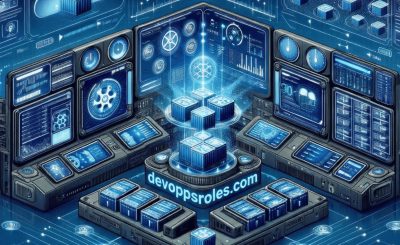Getting Started with Kubernetes: If you’re exploring Kubernetes (K8s) and feel overwhelmed by technical jargon, this article will help you understand this powerful container management platform in a simple and useful way.
Table of Contents
What is Kubernetes?
Kubernetes is an open-source system designed to automate deploying, scaling, and managing containerized applications. Containers are a technology that allows you to package software with all its dependencies (like libraries, configurations, etc.) so it runs consistently across any environment.
Why is Kubernetes Important?
- Automation: Kubernetes automates many complex tasks like deployment, management, and scaling of applications, saving you time and reducing errors.
- Scalability: As demand increases, Kubernetes can automatically scale your applications to meet this demand without manual intervention.
- Flexibility: Kubernetes can run on various platforms, from personal computers and on-premises servers to public clouds like Google Cloud, AWS, and Azure.
Key Components of Kubernetes
- Node: These are the physical or virtual servers that run containerized applications. A Kubernetes cluster usually has one or more nodes.
- Pod: The smallest deployable units in Kubernetes, containing one or more containers that run together.
- Cluster: A collection of nodes and pods, forming a complete container management system.
- Service: An abstraction that defines how to access pods, often used for load balancing and ensuring application availability.
Getting Started with Kubernetes
- Install Minikube: Minikube is a tool that allows you to run Kubernetes on your local machine. It’s the best way to start learning and experimenting with Kubernetes.
curl -LO https://storage.googleapis.com/minikube/releases/latest/minikube-linux-amd64
sudo install minikube-linux-amd64 /usr/local/bin/minikube
minikube start- Deploy Your First Application: After installing Minikube, you can deploy a sample application to see how Kubernetes works.
kubectl create deployment hello-node --image=k8s.gcr.io/echoserver:1.4
kubectl expose deployment hello-node --type=LoadBalancer --port=8080
minikube service hello-node- Monitor and Manage: Use
kubectlcommands to check the status of pods, services, and other components.
kubectl get pods
kubectl get servicesReal-World Example: Managing a Web Application
Imagine you have a web application written in Python and Flask. You can create a Dockerfile to package this application and deploy it with Kubernetes.
Dockerfile:
FROM python:3.8-slim
WORKDIR /app
COPY . /app
RUN pip install -r requirements.txt
CMD ["python", "app.py"]Deploying on Kubernetes:
- Create a
deployment.yamlconfiguration file:
apiVersion: apps/v1
kind: Deployment
metadata:
name: flask-app
spec:
replicas: 3
selector:
matchLabels:
app: flask-app
template:
metadata:
labels:
app: flask-app
spec:
containers:
- name: flask-app
image: your-docker-repo/flask-app:latest
ports:
- containerPort: 5000- Create and deploy the application:
kubectl apply -f deployment.yaml
kubectl expose deployment flask-app --type=LoadBalancer --port=80 --target-port=5000- Access the application:
minikube service flask-appConclusion
Kubernetes provides flexibility and power for managing containerized applications. Getting started with Kubernetes can help you save time, increase efficiency, and ensure your applications are always available and scalable.
We hope this article has given you a clear and simple overview of Kubernetes, making you more confident as you begin your journey to learn and apply this technology. Thank you for reading the DevopsRoles page!
